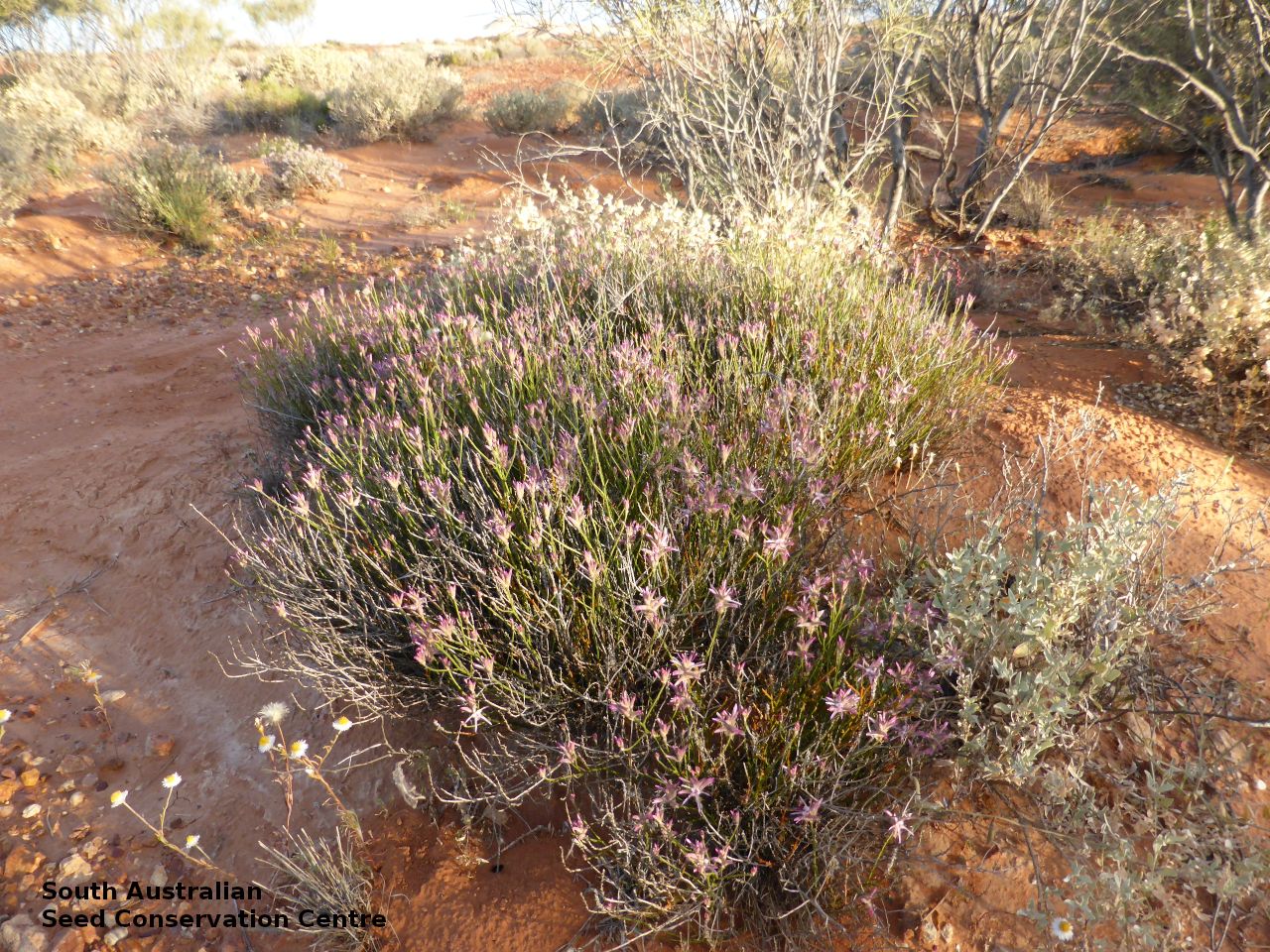
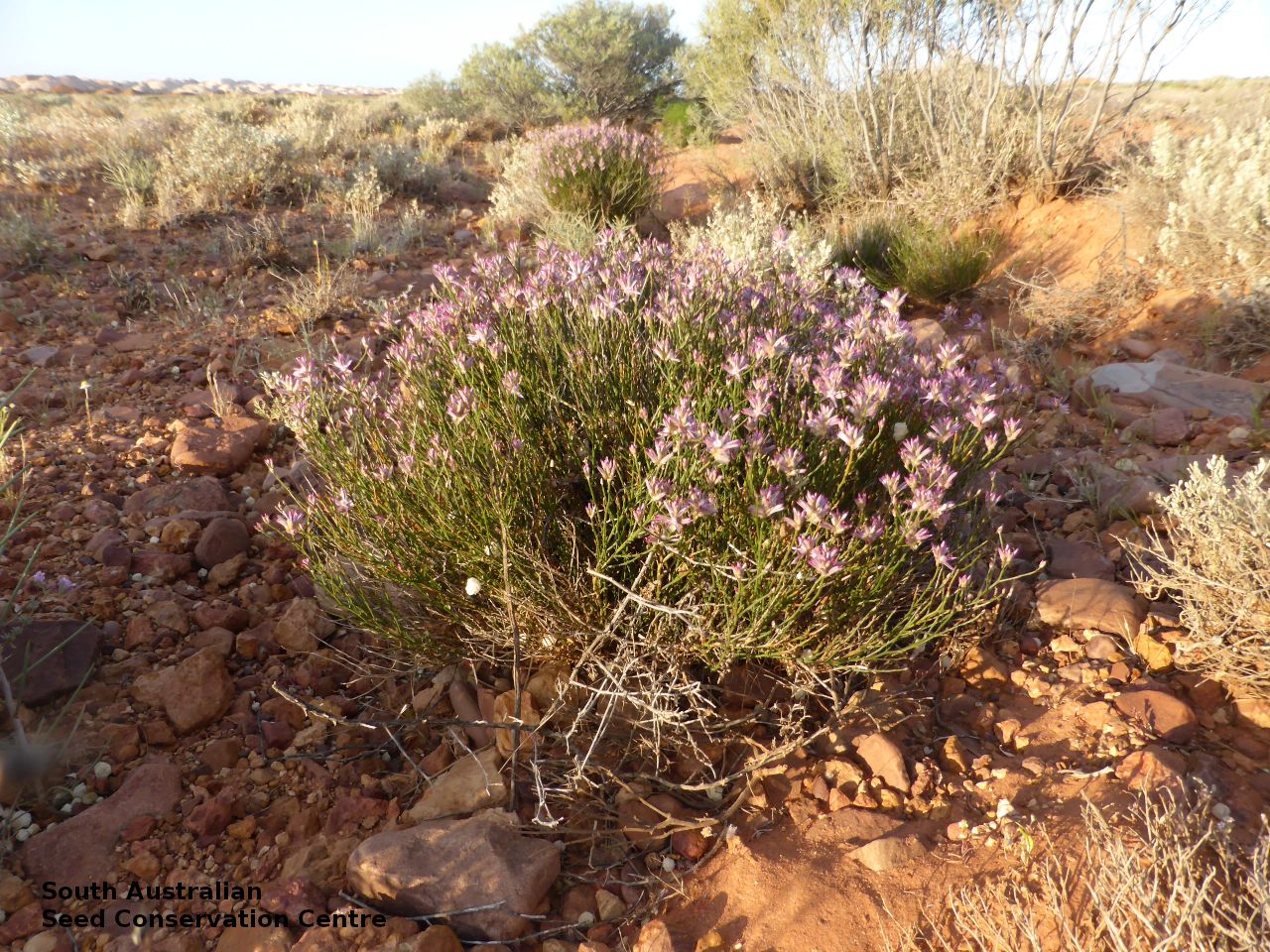
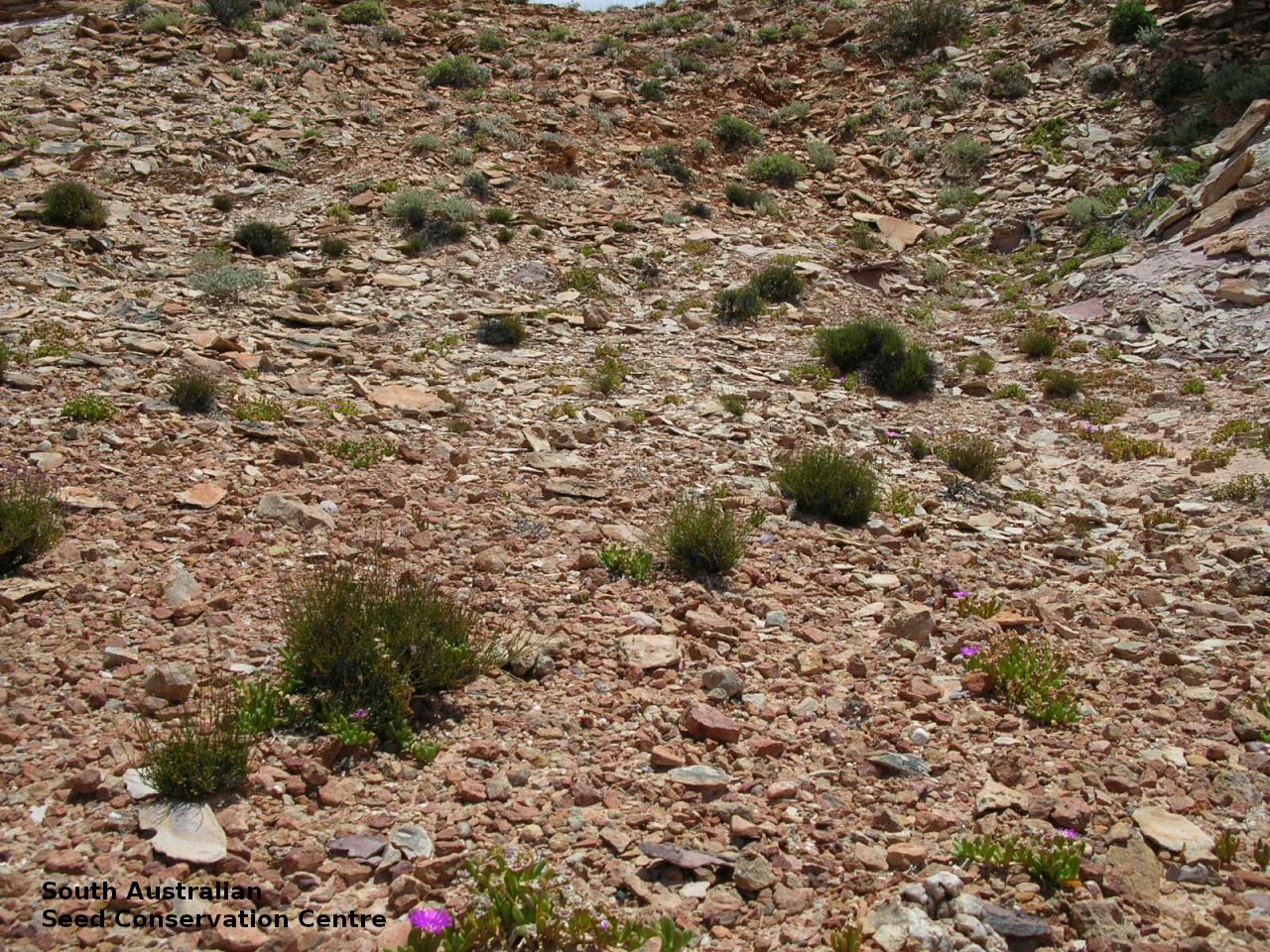
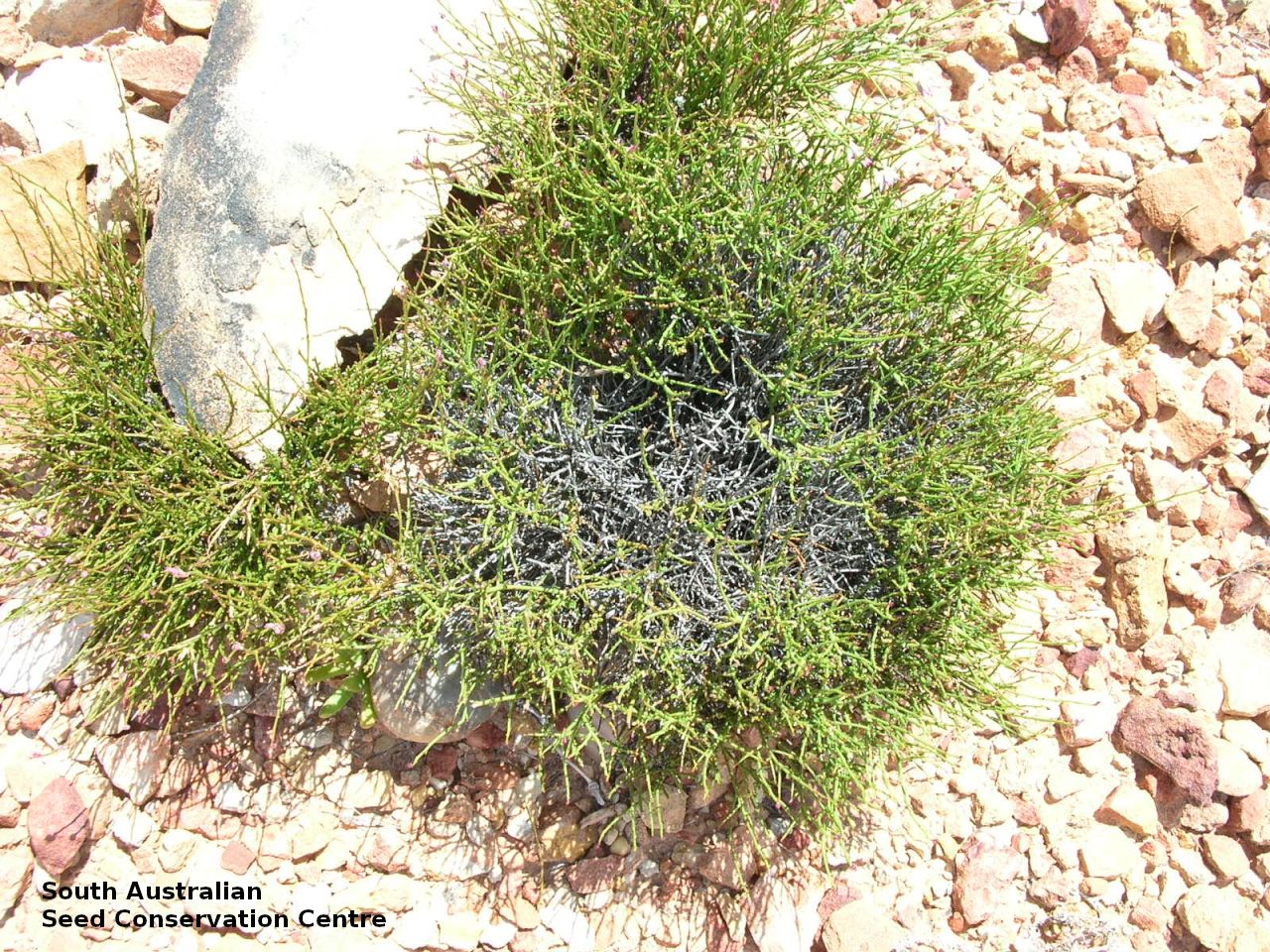
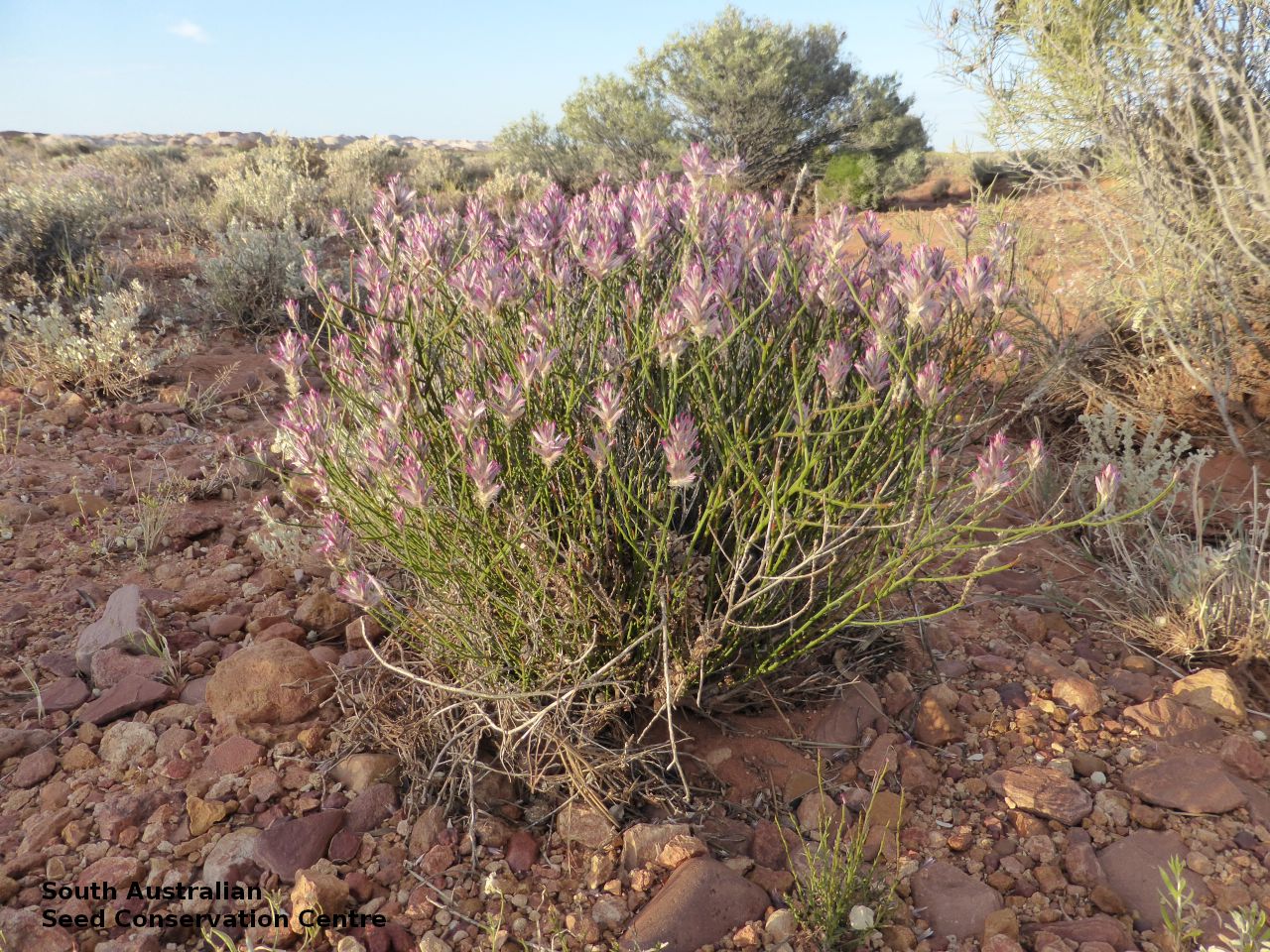
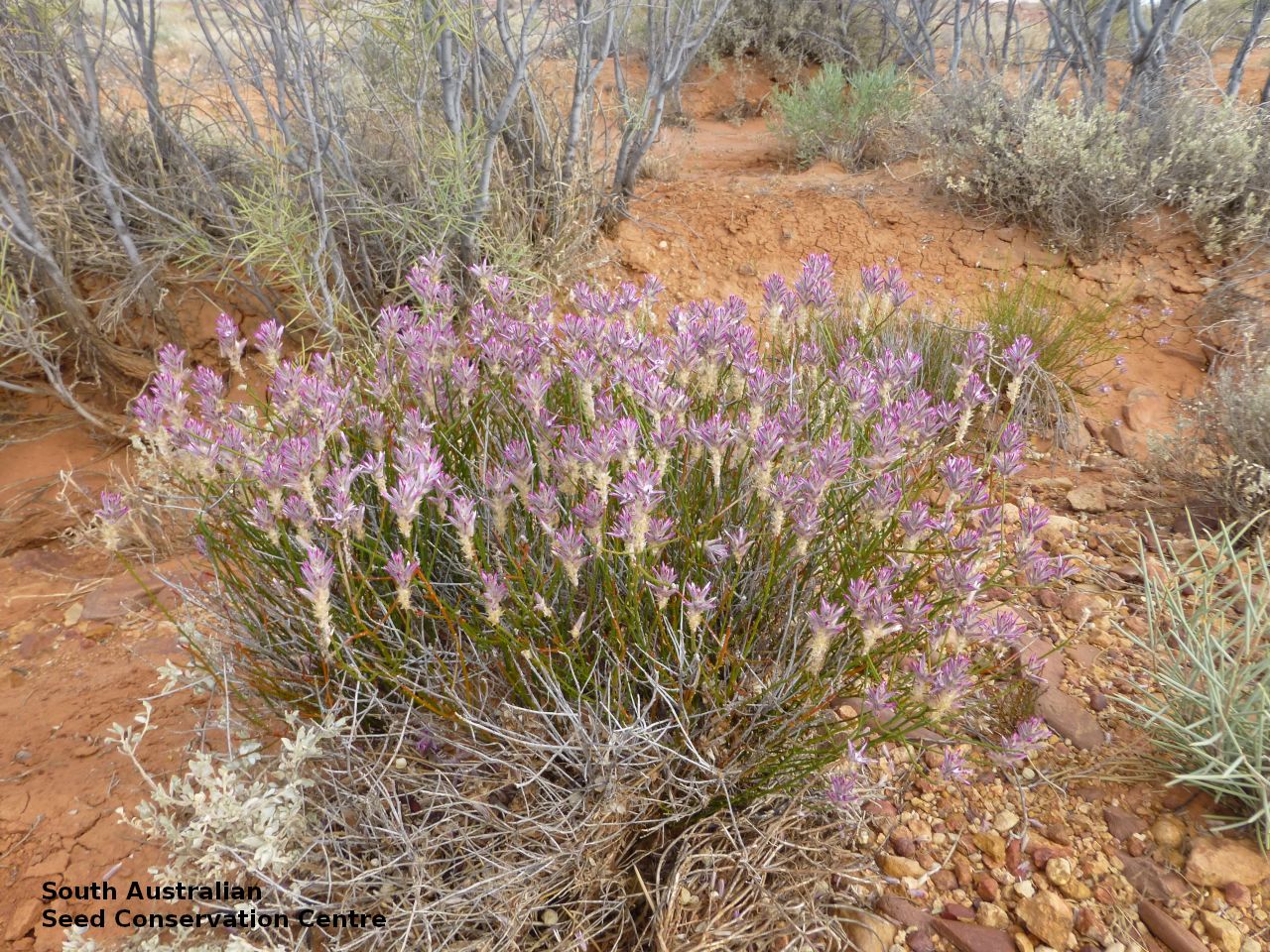
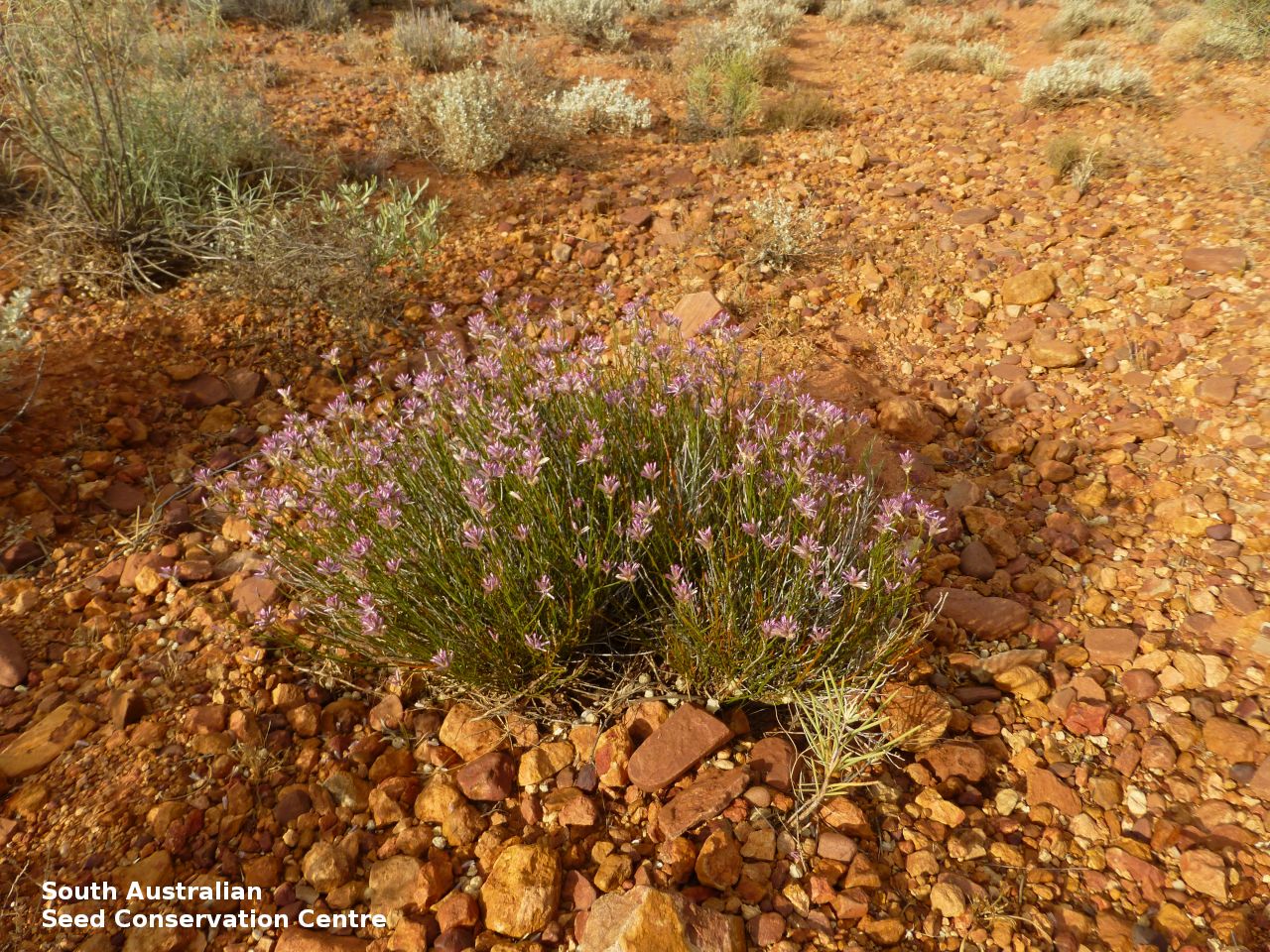
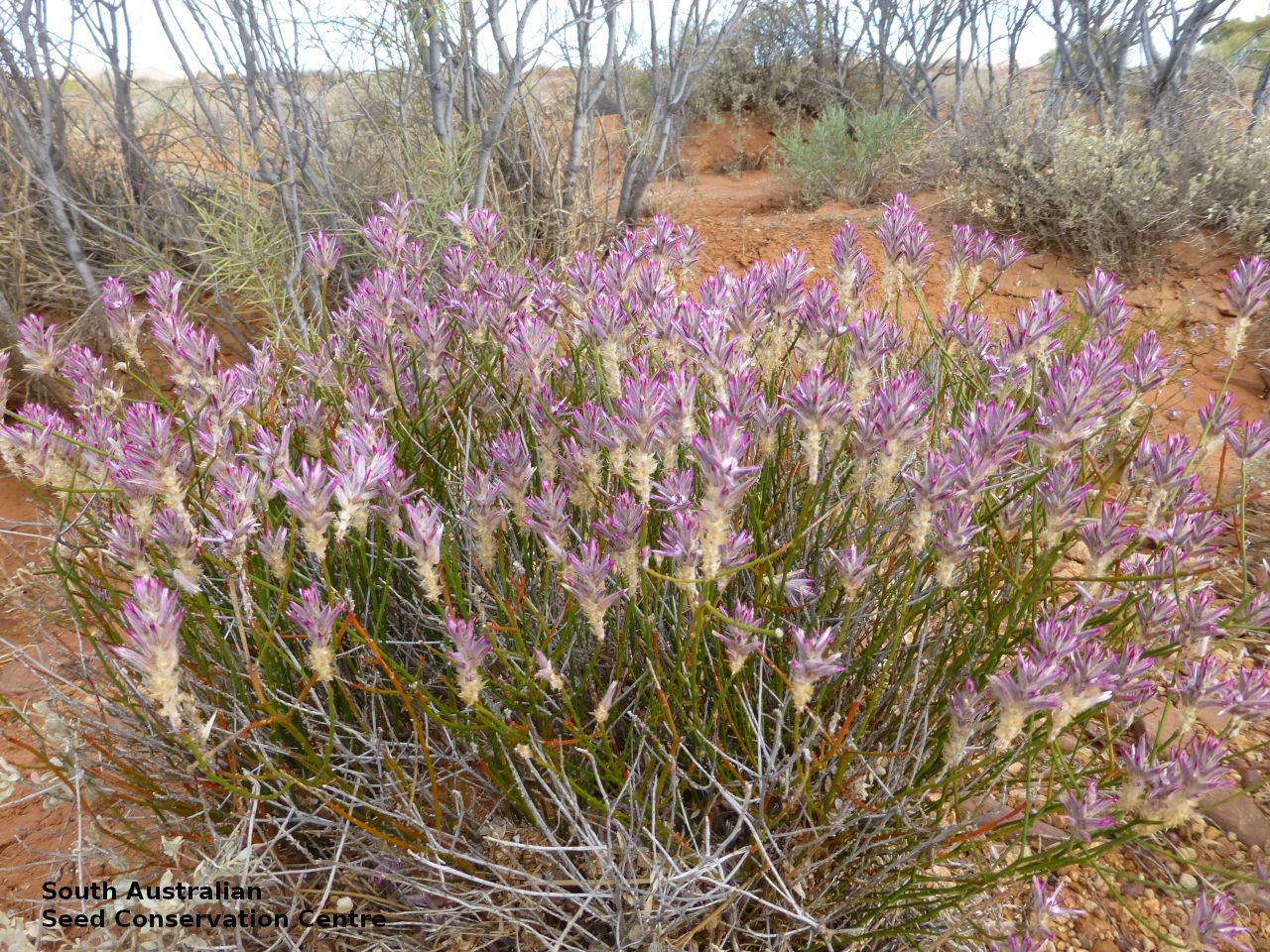
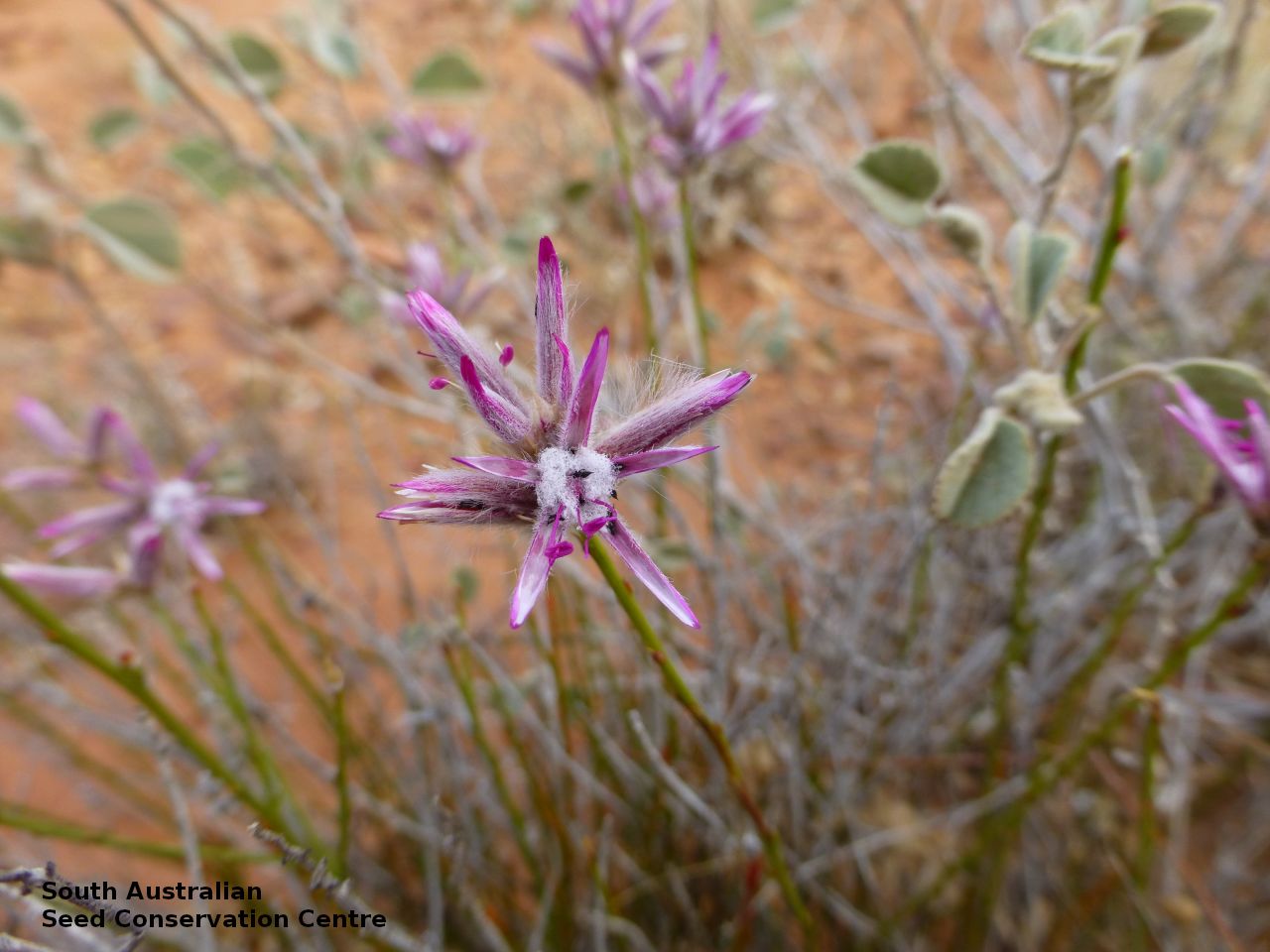
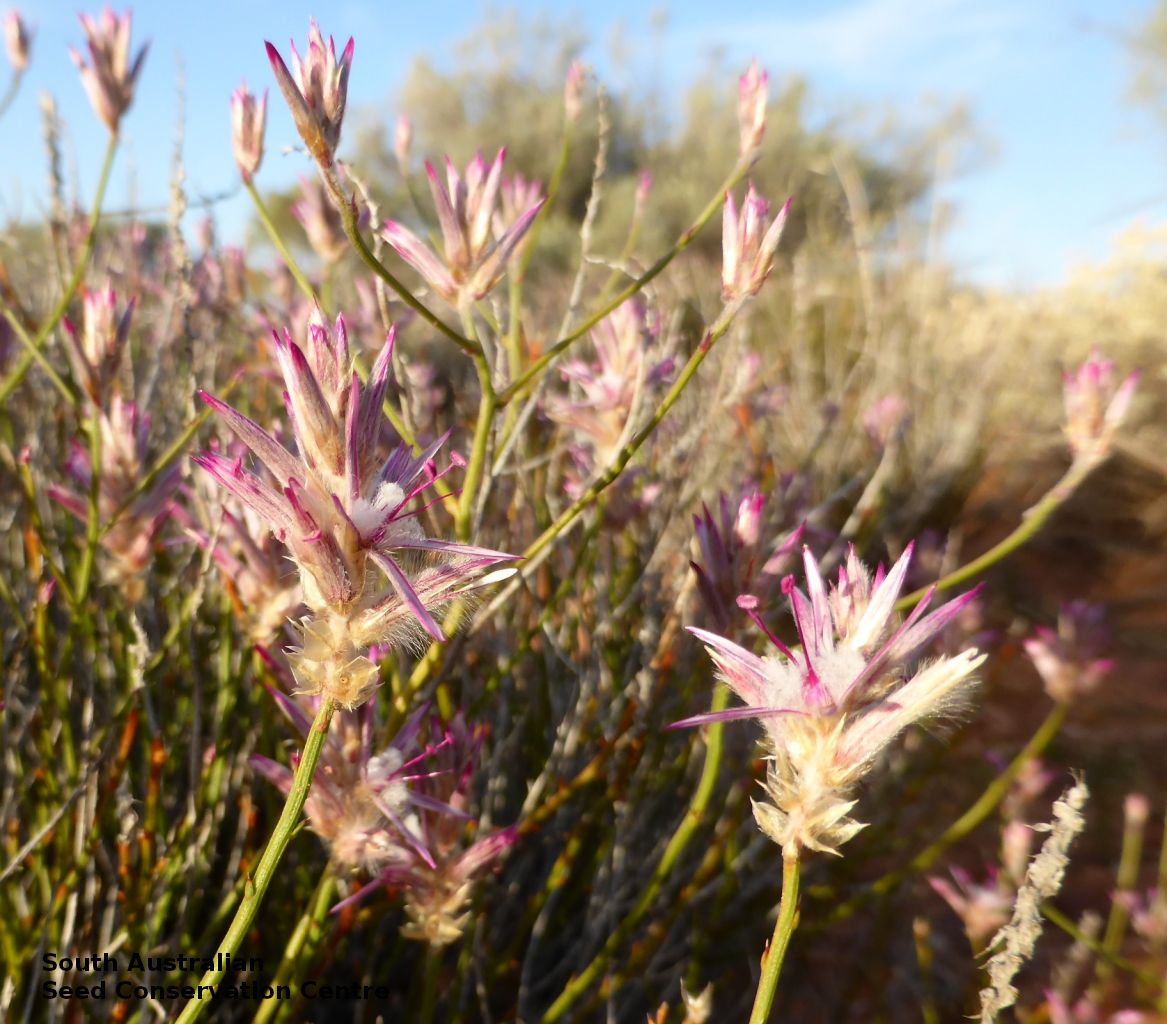

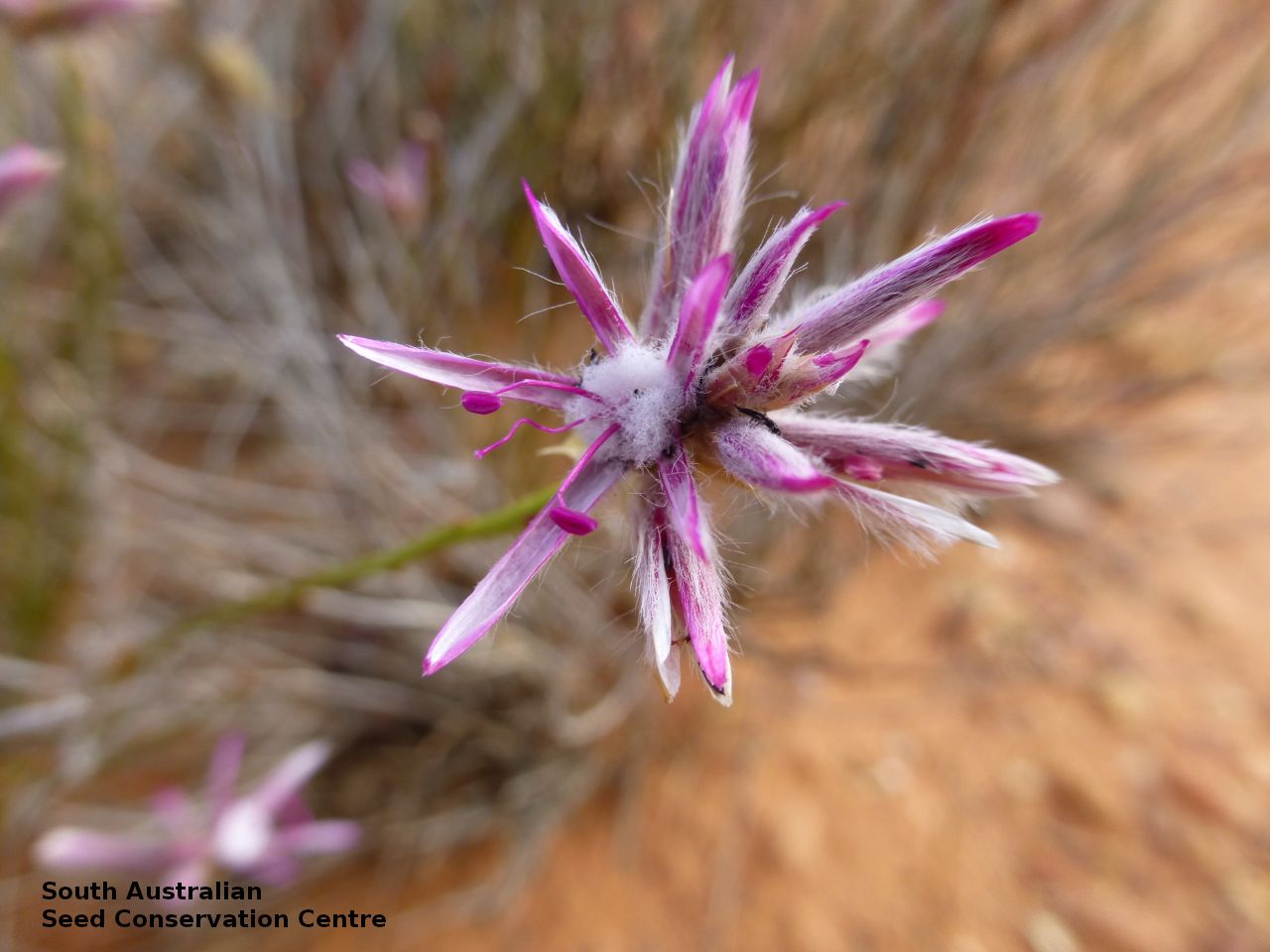
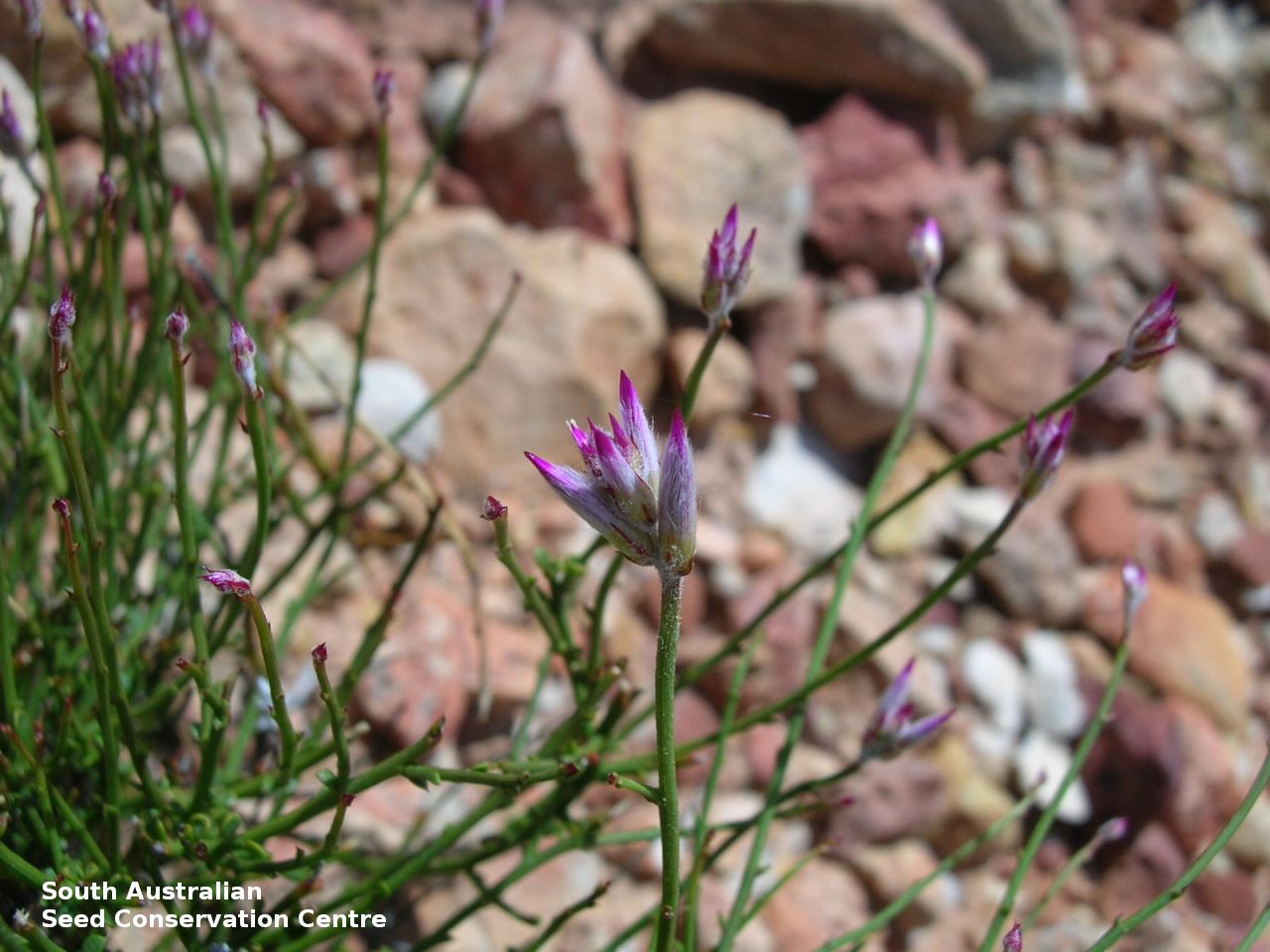
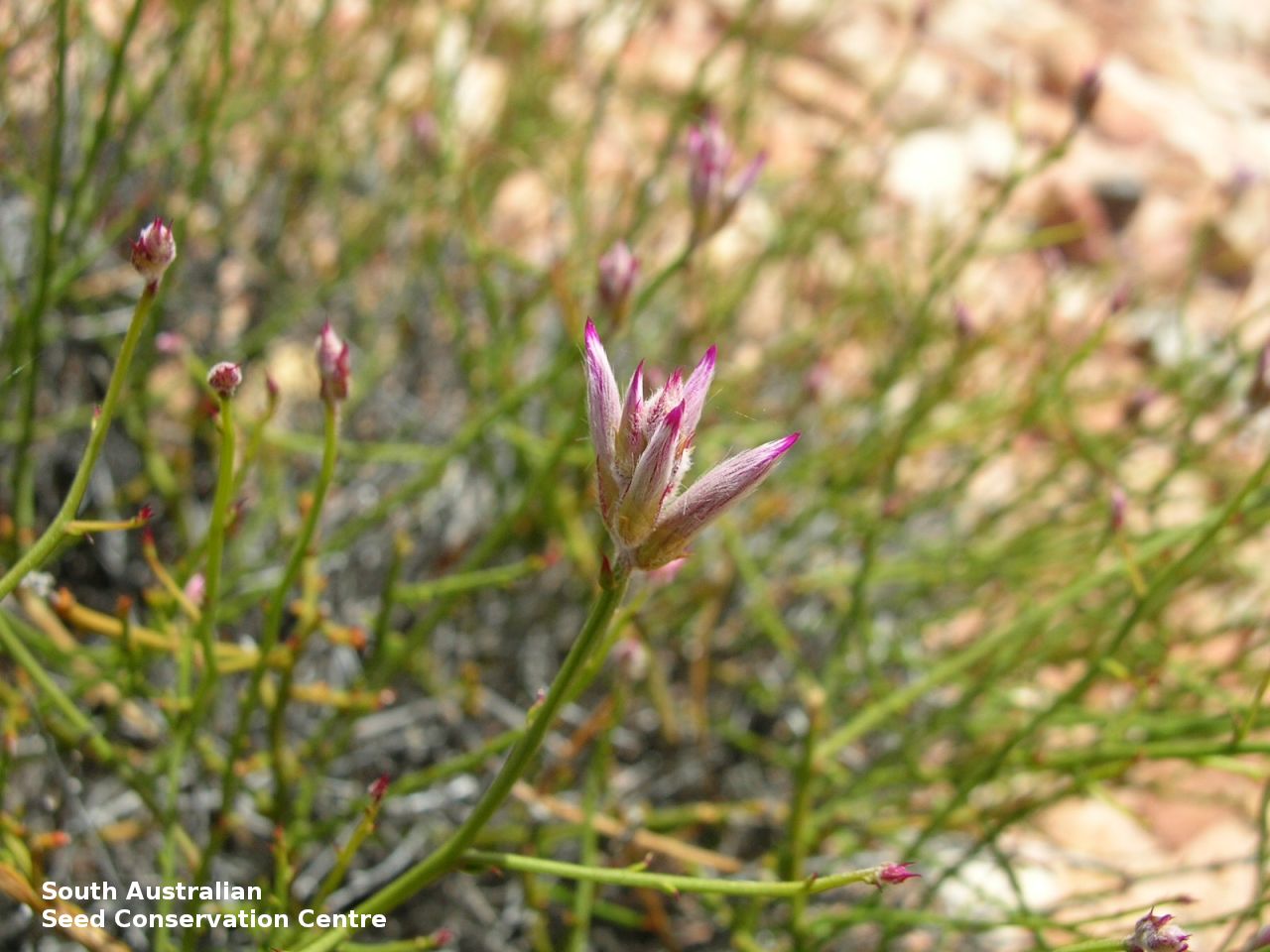
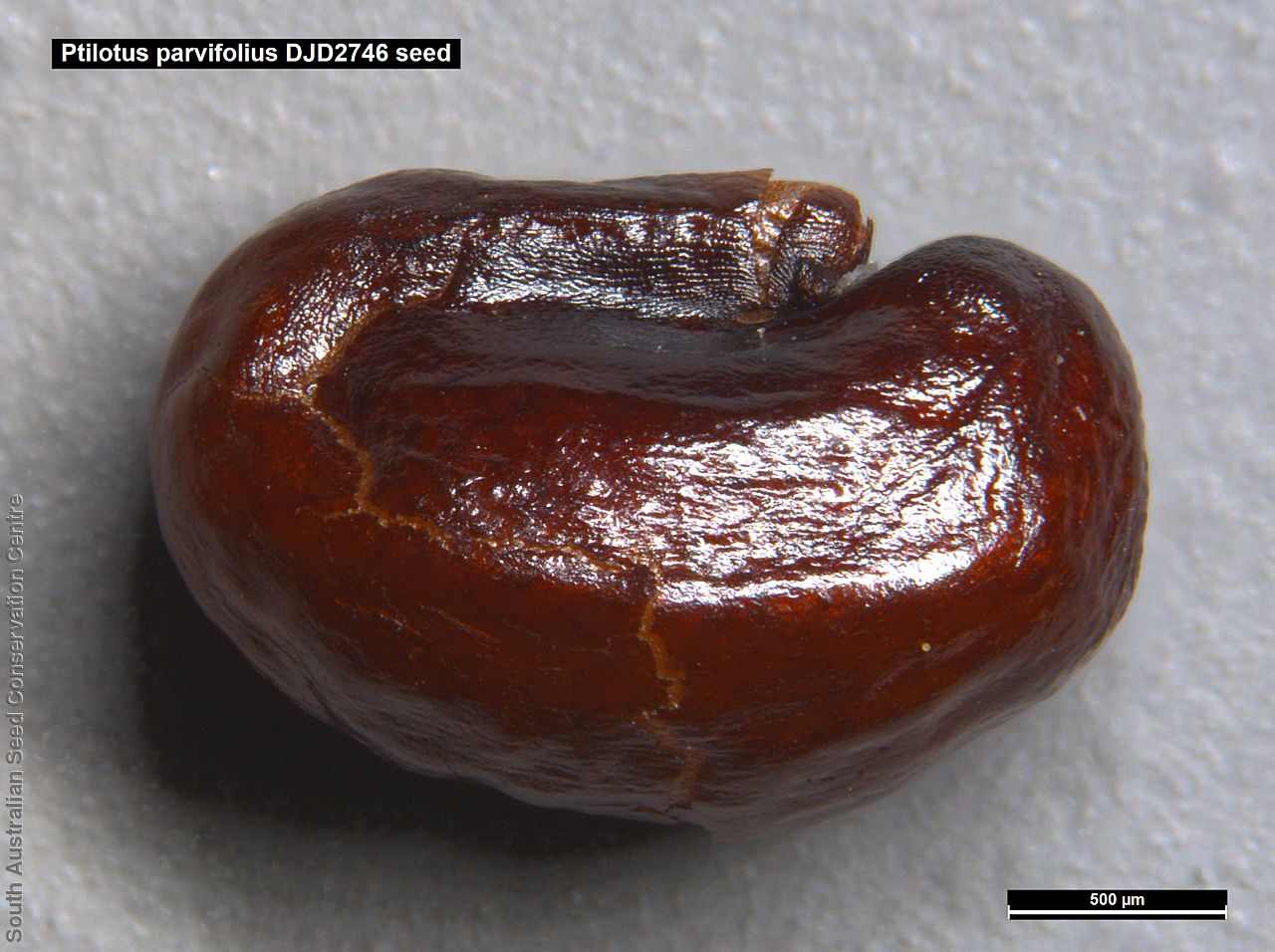
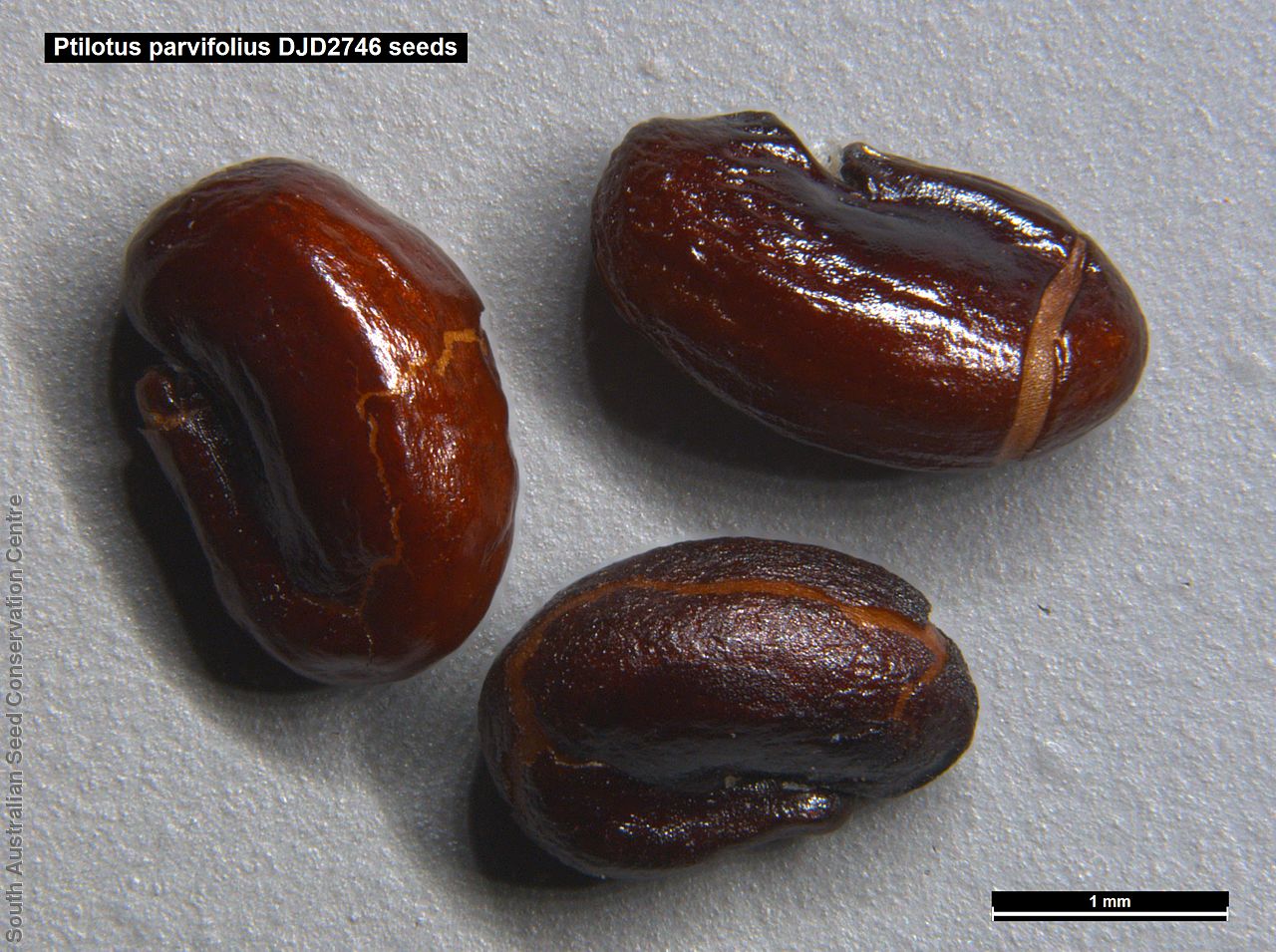

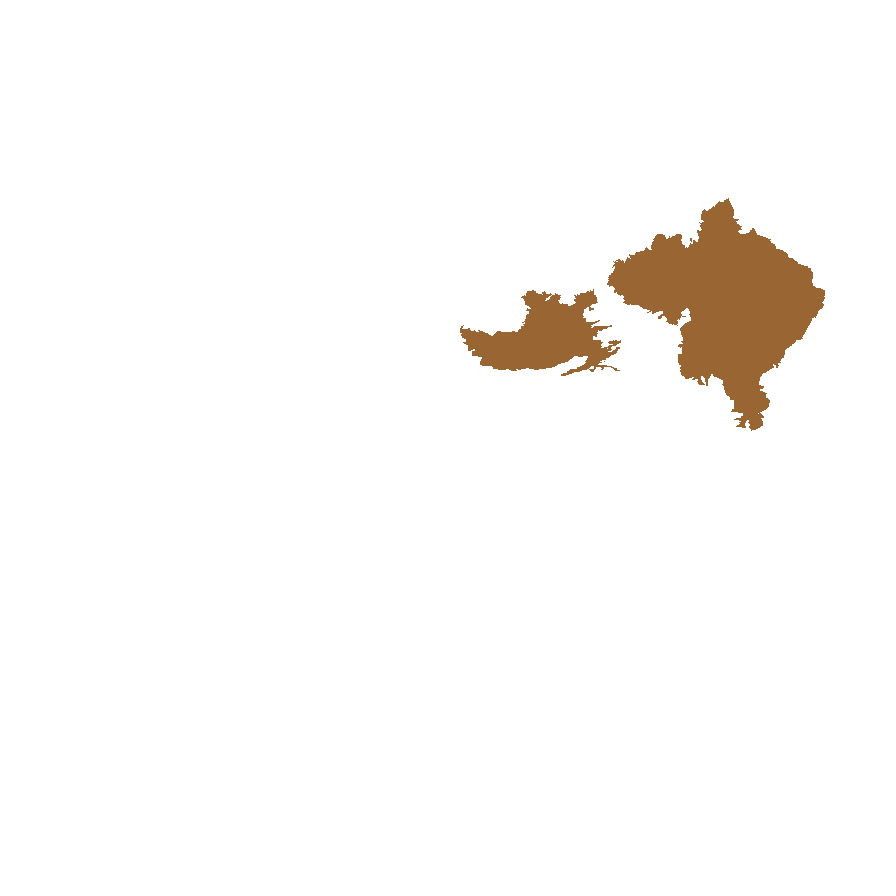
Botanical art
Prior names
Ptilotus parvifolius var. parvifolius, partly
Trichinium parvifolium
Ptilotus parvifolius var. laetus, partly
Common names
Shrubby Fox-tail
Small-leaf Mulla Mulla
Etymology
Ptilotus from the Greek 'ptilotos' meaning feathered or winged; referring to the hairy flowers. Parvifolius from the Latin 'parvus' meaning small and 'folium' meaning leaf.
Distribution and status
Endemic to South Australia and found between Lake Eyre South, Lake Torrens and Woomera, growing on red, brown or grey skeletal soils on rocky scree slopes, gibber flats, drainage lines, and on the edges of salt lakes. Native. Rare in South Australia.
Herbarium regions: Lake Eyre, Gairdner-Torrens
AVH map: SA distribution map (external link)
Plant description
Rounded, weakly divaricate, subspinescent shrub to 25 cm high with striate, glabrous, pale brown stems. Leaves sessile to subsessile, ovate to obovate, to 5.5 mm long and 2 mm wide, sometimes clustered on new stem shoots, glabrous on upper surface, lower surface with scattered hairs near base, green, apices mucronate, margins flat. Flower-spikes short clusters to 2 cm long with 10–20 pink to pinkish-purple flowers. Flowering between July and January. Ptilotus parvifolius differs from P. whitei, with which it was previously confused, by its narrow, sessile to subsessile, distinctly mucronate green leaves (usually broader, petiolate, apiculate, grey-green in P. whitei), glabrous tepal apices (hairy in P. whitei) and the bract shorter than the bracteoles (bract and bracteoles similar size in P. whitei). Fruits are white to pale brown, ovoid head containing numerous long papery and hairy fruits, each containing one seed. Seeds are dark brown reinform seed to 2.5 mm long and 1.5 mm wide. Seed embryo type is peripheral.
Seed collection and propagation
Collect seeds between October and February. Be very careful when collecting this species as the fruits contain fine hairs that may cause an allergic reaction for some people. Collect the fruit heads when dried to a white to pale straw colour. Each fruit should come off the head easily when fingers are rubbed up the stem. Collect more fruits than required as not all fruits contain viable seed. Be very careful when cleaning this species as the fruits contain fine hairs that may cause an allergic reaction for some people. To clean, rub the fruit heads gently to dislodge the seed at the base of each fruit. Use a sieve to separate the unwanted material. Store the seeds with a desiccant such as dried silica beads or dry rice, in an air tight container in a cool and dry place. From one collection, the seed viability was high, at 90%. Seeds are non-dormant, viable seed should germinate readily.
| Location | No. of seeds (weight grams) | Number of plants | Date collected | Collection number Collection location | Date stored | % Viability | Storage temperature |
|---|---|---|---|---|---|---|---|
| BGA MSB | 100 (0.18 g) 350 (0.65 g) | 40+ | 1-Nov-2013 | DJD2746 Lake Eyre | 24-Mar-2015 | 90% | -18°C |
Number of plants: This is the number of plants from which the seeds were collected.
Collection location: The Herbarium of South Australia's region name.
% Viability: Percentage of filled healthy seeds determined by a cut test or x-ray.